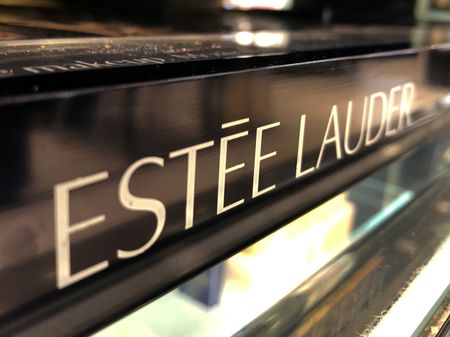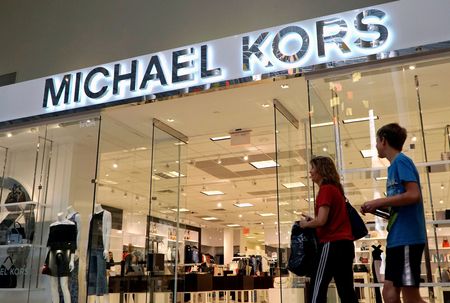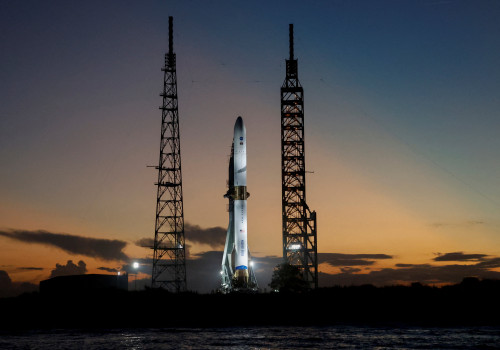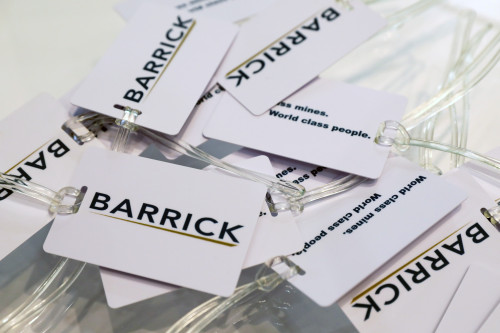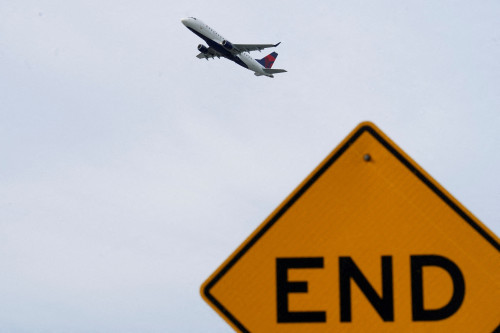By Deborah Mary Sophia and Ananya Mariam Rajesh
(Reuters) – U.S. luxury companies including Michael Kors-owner Capri and Estee Lauder will likely record a hit to sales from a slower-than-expected recovery in key market China that likely exacerbated cooling demand in the U.S.
Global companies, including luxury goods makers, had bet on a surge in demand from China after the country eased strict pandemic restrictions to help counter slowing sales in other parts of the world.
“Everyone had expected China to come back a little bit more strongly in terms of the rebound post COVID than it has so far. This has clearly led to some need to reset expectations for companies that have a lot of exposure there,” said Raymond James analyst Olivia Tong.
Meanwhile, the world’s top luxury group LVMH last month flagged cooling demand for high-end apparel and accessories in the U.S. as a post-pandemic surge loses steam.
U.S. demand for luxury goods has taken a knock in the past few quarters as wealthy shoppers pause a splurging spree amid still high inflation.
THE CONTEXT
The frail recovery in China has been highlighted by companies ranging from Procter & Gamble to L’Oreal amid record high youth jobless rate and no solid stimulus measures yet to boost domestic consumption.
On Wednesday, the world’s second-largest economy’s consumer sector fell into deflation in July for the first time since February 2021.
“For China, the consumer has been somewhat cautious during the reopening compared to what the American consumer has been,” said Rick Patel, analyst at Raymond James.
Another crucial growth driver for luxury goods makers, travel retail, or sales made at airports or travel destinations, is also yet to recover fully from the pandemic slump.
A “lower guidance (is) likely at Estee Lauder” as spending trends in Hainan – a top travel destination in China – appear softer than expected, Cowen analyst Oliver Chen said, adding he does not expect to see a rapid rebound in the region.
Known for its MAC lipsticks, Estee typically gets about 30% of its annual revenue from the Asia Pacific region – its second largest market.
Capri gets a little more than 15% of its net sales from Asia, and the company in May pinned its full-year forecast on “stronger-than-previously-anticipated trends from the reopening of China”.
However, it is not all gloomy for the sector.
Companies, including Ralph Lauren and Coach handbag maker Tapestry, are expected to fare slightly better, thanks to a product assortment that has stuck with consumers in China and the U.S.
THE FUNDAMENTALS
** Capri is expected to show an 11.7% decline in first-quarter revenues, with net income falling more than 57%
** Estee Lauder is likely to report a 2% fall in revenue and a loss of 3 cents per share for its fourth fiscal quarter, compared to a profit of 42 cents a year earlier
** Meanwhile, revenue at Tapestry is expected to rise and that at Ralph Lauren to drop marginally, while profits at both companies are projected to surge
** Capri and Ralph Lauren report first-quarter earnings on Thursday, while Tapestry and Estee Lauder report on August 17 and 18, respectively
WALL STREET SENTIMENT
** Estee Lauder shares have slumped about 32% this year, with Capri declining nearly 39%
** Meanwhile, Ralph Lauren and Tapestry have gained 23% and 9%, respectively
(Reporting by Deborah Sophia and Ananya Mariam Rajesh in Bengaluru; Editing by Sriraj Kalluvila)

